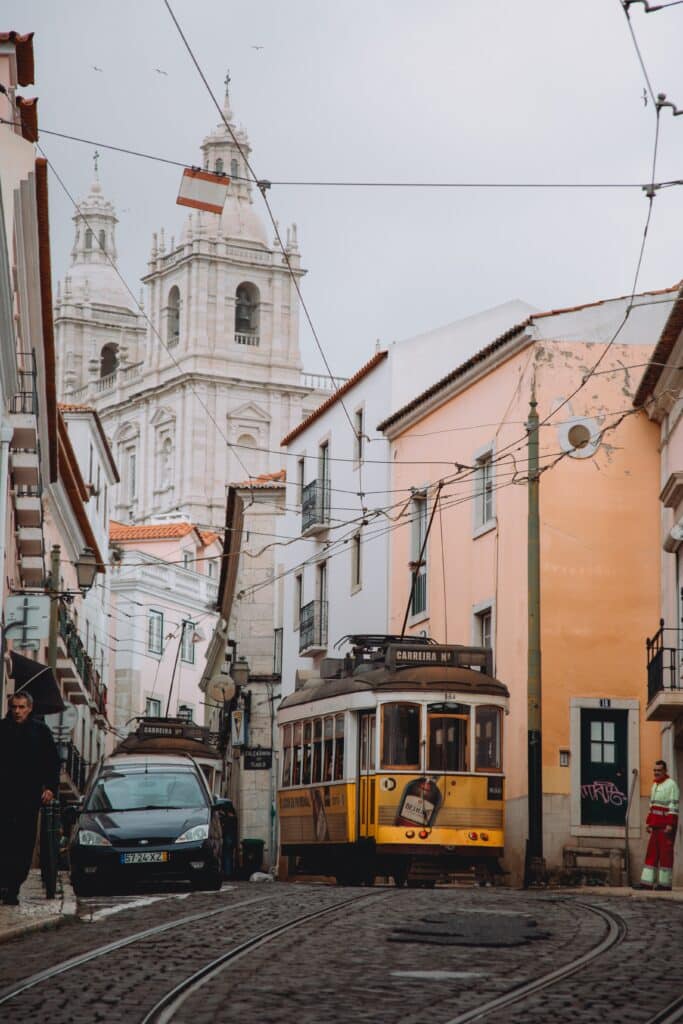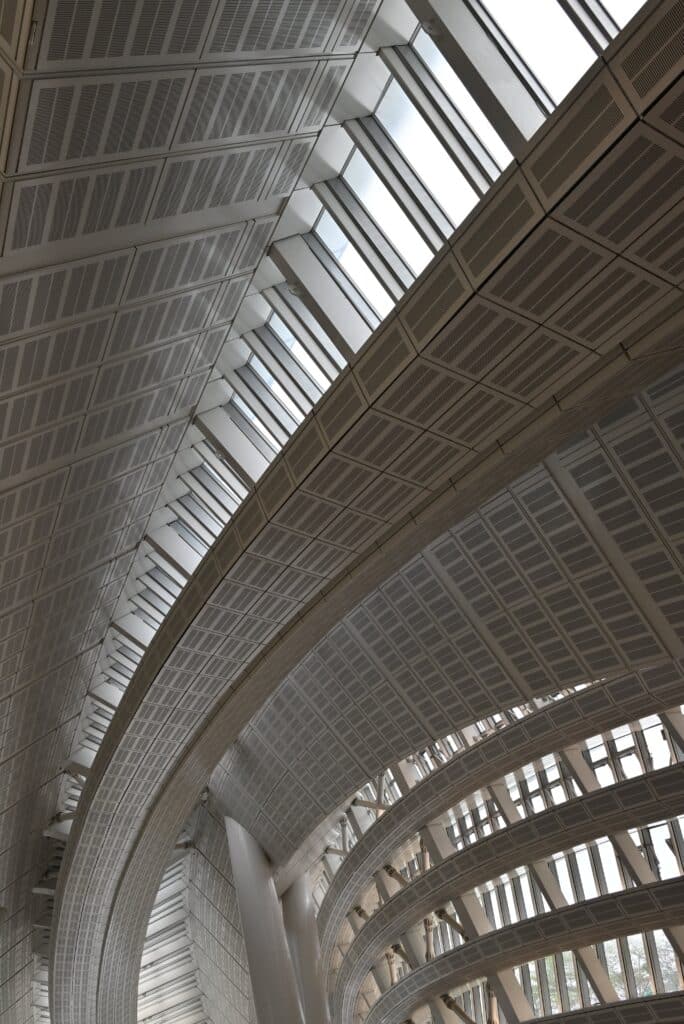If you’re an avid history buff, Guanacaste is a treasure trove waiting to be discovered. Nestled in the northwestern corner of Costa Rica, this stunning province is a haven for those seeking to immerse themselves in the rich historical tapestry of the region. From ancient pre-Columbian settlements to colonial-era sites, Guanacaste offers a myriad of day trip options to indulge your passion for history. So grab your camera, pack some snacks, and get ready to embark on a journey through time as we explore Guanacaste’s captivating historic landmarks.

Understanding the Historical Significance of Guanacaste
Guanacaste, located in the northwest region of Costa Rica, boasts a rich historical significance that dates back to pre-colonial times. Understanding the history of this region is crucial in appreciating its cultural heritage and the role it played in shaping Costa Rica as a nation.
The Pre-Colonial History of Guanacaste
Before the arrival of Spanish colonialists, Guanacaste was inhabited by indigenous tribes such as the Chorotega and the Nicoya. These tribes had a profound influence on the region’s culture and traditions, leaving behind traces of their existence through archaeological findings and historical accounts. Exploring the pre-colonial history of Guanacaste allows us to appreciate the roots of its cultural diversity.
The Influence of Spanish Colonialism
The Spanish colonization of Guanacaste in the 16th century brought significant changes to the region. Spanish settlers introduced their language, religion, and architectural styles, leaving a lasting impact on Guanacaste’s cultural landscape. Furthermore, the exploitation of natural resources by the Spanish had tremendous consequences for the indigenous populations. Understanding the influence of Spanish colonialism helps us grasp the complexities of Guanacaste’s historical narrative.
Guanacaste’s Role in Costa Rica’s Independence
Guanacaste played a pivotal role in Costa Rica’s fight for independence from Spain. The Annexation of Guanacaste, celebrated annually on July 25th, commemorates the region’s decision to join Costa Rica in 1824. This event not only solidified Costa Rica’s claim to Guanacaste but also contributed to the nation’s sense of identity and unity. Recognizing Guanacaste’s role in Costa Rica’s independence allows us to appreciate the historical significance of the region.
La Casona Historical Site
La Casona, a historical site located within Santa Rosa National Park, holds immense importance in Costa Rican history. The site served as the headquarters for Costa Rican troops during the Battle of Santa Rosa in 1856, a defining moment in the country’s fight against William Walker’s filibuster. Discovering the historical context of La Casona allows us to understand the courage and resilience of the Costa Rican soldiers who defended their land.
Architectural Attributes of La Casona
La Casona showcases architectural elements typical of the Spanish colonial period, such as thick adobe walls, expansive verandas, and terracotta roof tiles. Its design reflects the practicality and resilience needed to withstand the tropical climate while maintaining a semblance of elegance. The restoration and preservation efforts have been undertaken to ensure that future generations can appreciate the architectural beauty and historical significance of La Casona.
Current State and Preservation Efforts of La Casona
Although La Casona has suffered from the passage of time and natural elements, efforts have been made to restore and preserve this historical site. The Costa Rican government, in collaboration with local organizations, has implemented conservation measures to protect the structural integrity of La Casona and maintain its authenticity. These preservation efforts ensure that visitors can experience the historical atmosphere and learn from the lessons of the past at La Casona.

Santa Rosa National Park
Santa Rosa National Park not only offers breathtaking natural beauty but also houses several historical features that provide a glimpse into Costa Rica’s past.
Historical Features within Santa Rosa National Park
Stepping into Santa Rosa National Park is like traveling back in time. The park is home to Hacienda Santa Rosa, which served as the command post during the Battle of Santa Rosa. Exploring this site allows visitors to understand the strategic importance of Santa Rosa in the context of Costa Rican warfare. Additionally, visitors can discover other historical remnants, such as the historical trails used by indigenous tribes and Spanish settlers.
Role of Santa Rosa National Park in Costa Rican Warfare
Santa Rosa National Park witnessed a significant battle during the Filibuster War, fought between Costa Rican troops and the filibuster forces commanded by William Walker. The Battle of Santa Rosa, fought on March 20, 1856, showcased the bravery and determination of the Costa Rican soldiers in defending their homeland against foreign invaders. A visit to Santa Rosa National Park offers a chance to appreciate the historical events that unfolded within its borders.
Wildlife and Natural Beauty Complementing History
Beyond its historical significance, Santa Rosa National Park also boasts an incredible array of wildlife and natural landscapes. Visitors can encounter diverse flora and fauna, including howler monkeys, jaguars, and various bird species. The harmonious coexistence of history and nature within Santa Rosa National Park creates a unique experience for visitors seeking to connect with both the past and the present.
Liberia’s Historical Centre
Liberia, the capital city of Guanacaste, is a treasure trove of historical architecture and cultural heritage.
Preservation of Traditional Architecture
Liberia’s Historical Centre, declared a National Historic District, showcases well-preserved traditional architecture that reflects the city’s colonial past. The buildings feature intricate details, vibrant colors, and a blend of Spanish and Caribbean influences. The preservation efforts undertaken by the local community and authorities ensure that Liberia’s Historical Centre remains a testament to the city’s cultural and architectural heritage.
Historically Important Buildings in Liberia
Wandering through Liberia’s Historical Centre reveals a wealth of historically significant buildings. The Iglesia Inmaculada Concepción, a neoclassical church dating back to the 19th century, stands as a symbol of faith and architectural beauty. The Casa de la Cultura, formerly a prison, now houses art exhibitions and cultural events, serving as a cultural hub for the city. Exploring these buildings offers insight into Liberia’s past and the stories they hold.
The Richness of Cultural Heritage in Liberia’s Centre
Liberia’s Historical Centre not only showcases architectural wonders but also embodies the cultural heritage of the Guanacaste region. The city’s vibrant festivals, such as the Fiestas Cívicas de Liberia, highlight traditional music, dance, and cuisine, giving visitors a taste of the local Guanacaste culture. Liberia’s Historical Centre is a testament to the city’s vibrant past and its commitment to preserving its cultural heritage.

Nicoya’s Colonial Church
Nicoya, a town situated in Guanacaste, boasts a colonial church that holds great historical and cultural significance.
History of Nicoya’s Colonial Church
The colonial church in Nicoya, initially built in the 16th century, serves as an iconic symbol of the town’s rich history. The church has witnessed the passage of time and various architectural styles but has retained its essential elements and historical importance. Exploring the church allows visitors to connect with the past and contemplate the cultural heritage that Nicoya carries.
Architectural Style and Constructions
The colonial church in Nicoya showcases a blend of architectural styles, reflecting the influence of different periods in Costa Rica’s history. The simplicity of the colonial era merges with neoclassical and Baroque elements, resulting in a unique architectural fusion. The craftsmanship and attention to detail in the construction of the church exemplify the skills of the artisans of that time.
Symbolic Significance of the Church in Nicoya
Nicoya’s colonial church stands as a symbol of the town’s faith, resilience, and cultural heritage. It has been a central gathering place for the community throughout history, hosting religious ceremonies, festivals, and important social gatherings. The church serves as a reminder of Nicoya’s deep-rooted connection to its history and spiritual traditions.
Fort of Guaitil
The Fort of Guaitil, located near the town of Santa Cruz, played a vital role in protecting the region from pirate attacks and foreign invasions.
Military Importance of Fort of Guaitil
Built in the 19th century, the Fort of Guaitil served as a strategic defense point against pirate raids along the Pacific coast. The fort’s robust design, with thick stone walls and cannons, showcased the determination of the local population to protect their land. Understanding the military significance of the Fort of Guaitil sheds light on the challenges faced by the Guanacaste region in ensuring its security and sovereignty.
Archaeological Findings at the Site
Archeological excavations at the Fort of Guaitil have unearthed various artifacts that provide insights into the lives of the people who inhabited the area. Discoveries such as ceramic fragments, weapons, and household items offer a glimpse into the daily activities and material culture of the past. These findings enable historians and archaeologists to piece together the historical puzzle of the fort and the surrounding region.
Current Status of Fort of Guaitil
The Fort of Guaitil, now in ruins, stands as a testimony to the region’s history and the challenges it faced in defending its territory. Preservation efforts by the local community aim to protect the remaining structures and raise awareness about the fort’s historical importance. Visitors to the site can appreciate the fort’s remnants and reflect on the struggles faced by the people who once stood guard at the Fort of Guaitil.
Barrigones Archeological Site
Situated near the town of Nicoya, the Barrigones Archeological Site offers a unique glimpse into the pre-Columbian history of Guanacaste.
Pre-Columbian History at Barrigones
The Barrigones Archeological Site has provided valuable insights into the indigenous cultures that once thrived in Guanacaste. The site features stone spheres, petroglyphs, and pottery fragments that offer a window into the spiritual beliefs, artistic expressions, and societal structures of the ancient inhabitants. Exploring Barrigones allows visitors to appreciate the ancestral heritage of Guanacaste.
Discoveries of Archaeological Interest
Excavations at Barrigones have led to the discovery of numerous artifacts, including ceremonial objects, tools, and burial sites. These findings shed light on the complex rituals, trade networks, and social structures of the ancient indigenous communities. The archaeological treasures found at Barrigones continue to contribute to our understanding of Costa Rica’s pre-Columbian history.
Visit Guidelines and Regulations for Preservation
Preserving the Barrigones Archeological Site is of utmost importance to protect its archaeological integrity. Visitors are encouraged to follow guidelines and regulations set by the local authorities to ensure the site’s preservation. These guidelines may include restrictions on touching or removing artifacts, staying on designated paths, and respecting the natural environment surrounding the site.
Las Baulas Marine National Park
Las Baulas Marine National Park, situated along the Pacific coast of Guanacaste, serves as a haven for marine life while also providing a fascinating historical backdrop.
The Park’s Importance in Protecting Marine Life
Las Baulas Marine National Park is renowned for its efforts in conserving nesting beaches for leatherback turtles, the largest marine reptile species. The park plays a crucial role in protecting the turtles’ nesting sites, ensuring the survival of these magnificent creatures. Exploring the park offers a once-in-a-lifetime opportunity to witness the natural wonders and the interconnectedness of marine life.
History of Conservation Efforts
Las Baulas Marine National Park’s conservation efforts have a rich history rooted in its commitment to preserving the leatherback turtles’ habitat. Over the years, local communities, conservation organizations, and government agencies have worked together to mitigate threats posed by human activities, such as beachfront development and poaching. The success of these conservation efforts highlights the importance of collective action in safeguarding our natural heritage.
How Natural History Interplays with Cultural History in Las Baulas Marine National Park
The presence of leatherback turtles in Las Baulas Marine National Park holds great cultural significance for the local communities. The turtles are considered sacred by the indigenous tribes, and their annual arrivals to the nesting grounds have been celebrated for generations. The interplay between natural history and cultural history at Las Baulas Marine National Park offers a unique perspective on the region’s cultural heritage and its deep-rooted connection to the environment.
Day Trip Recommendations
Planning a day trip in Guanacaste requires careful consideration of the region’s historical landmarks and their accessibility.
Planning Your Itinerary
When planning your day trip in Guanacaste, it is essential to prioritize the historical landmarks that interest you the most. Consider the proximity of the sites to one another and plan your itinerary accordingly. This will allow you to maximize your time and make the most of your visit.
Optimal Times for Visits
Certain historical sites in Guanacaste may have specific visiting hours or seasonal variations in accessibility. Researching the operating hours and peak times for each site can help you plan your visit more effectively. Additionally, taking into account factors such as weather conditions and the availability of guided tours can enhance your overall experience.
Getting Around Guanacaste
Guanacaste offers various transportation options for day trips, including car rentals, public buses, and guided tours. Depending on your preferences and comfort level, choose the mode of transportation that suits your needs the best. Renting a car provides flexibility, while guided tours can offer informative insights from knowledgeable local guides. Public buses may be a more budget-friendly option, but they require careful planning and consideration of bus schedules.
Preserving Guanacaste’s History for Future Generations
Preservation plays a crucial role in ensuring that future generations can appreciate and learn from Guanacaste’s historical landmarks.
Role of Tourism in Preservation
Tourism can be a force for good when it comes to preservation efforts in Guanacaste. Revenue generated from tourism can be allocated towards the maintenance and restoration of historical sites, ensuring their long-term survival. Additionally, responsible tourism practices, such as respecting site regulations and promoting sustainable practices, can minimize the impact of visitors on the historical landmarks.
Local Initiatives for Maintaining Historical Sites
Local communities and organizations in Guanacaste play a significant role in maintaining and protecting historical sites. Through collaborative efforts, community members volunteer their time and resources to restore and preserve these landmarks. Their dedication and passion contribute to the sustainability of Guanacaste’s cultural heritage.
How Visitors Can Contribute to Preservation
Visitors can actively contribute to the preservation of Guanacaste’s history by engaging in responsible tourism practices. This includes following site regulations, refraining from damaging or removing any artifacts, and leaving only footprints behind. Supporting local businesses and participating in educational programs or guided tours also helps promote awareness and appreciation for Guanacaste’s historical landmarks.
By understanding the historical significance of Guanacaste, exploring its historical sites, and actively participating in preservation efforts, we can ensure that the region’s rich cultural heritage remains intact for future generations to enjoy. Guanacaste offers a unique blend of history, nature, and cultural experiences, making it an ideal destination for history buffs seeking to delve into the past while embracing the present.







0 Comments